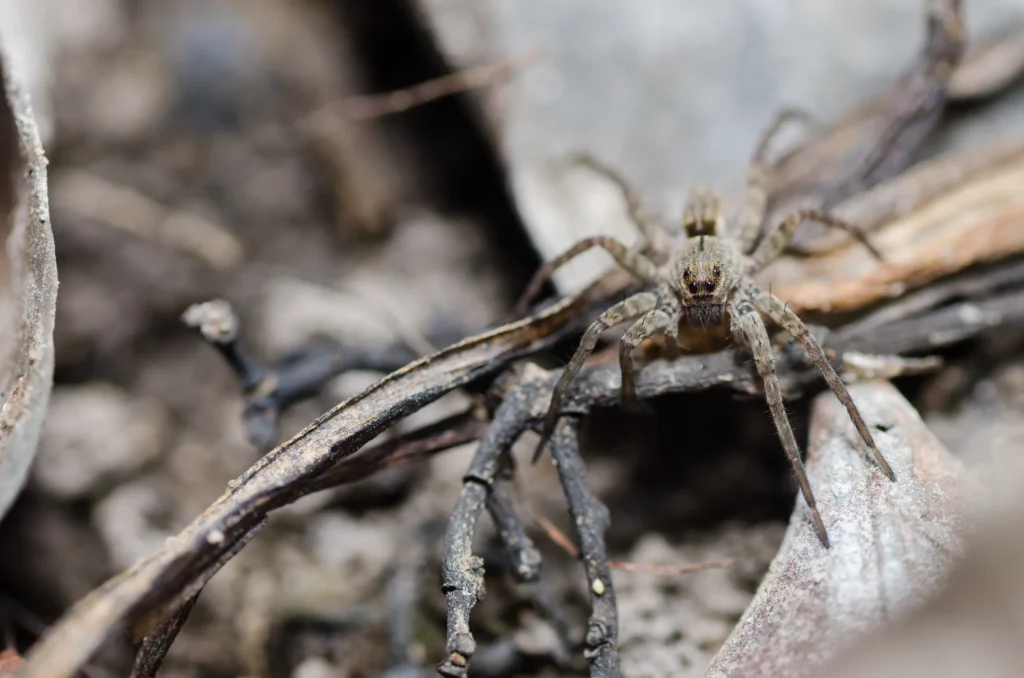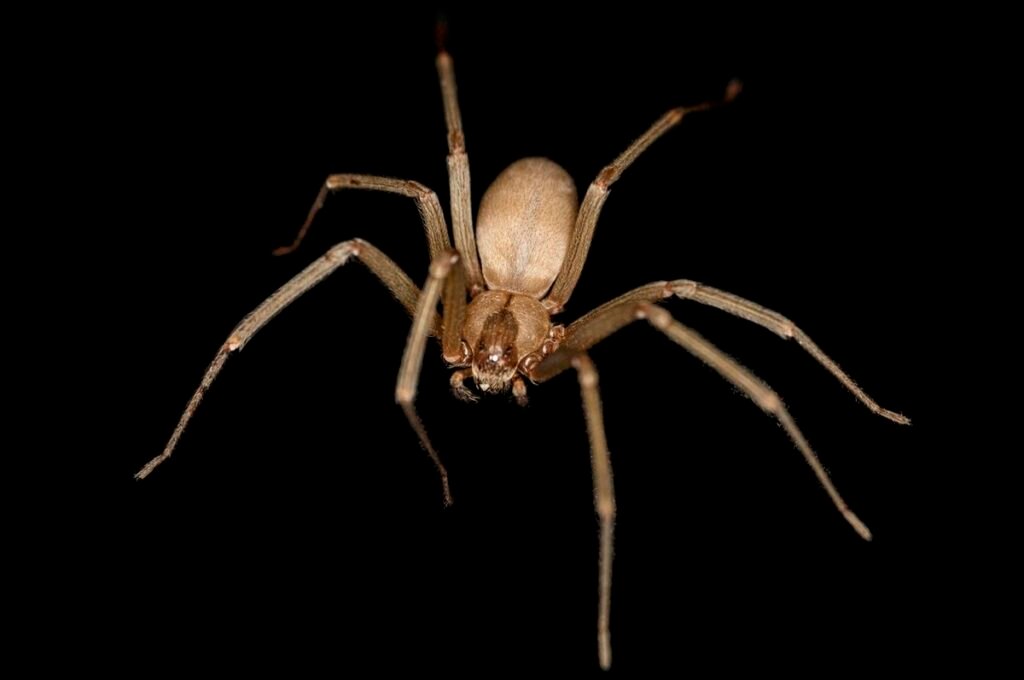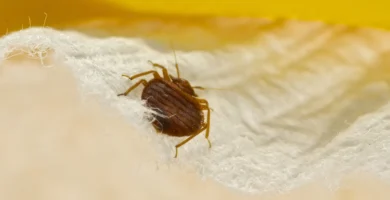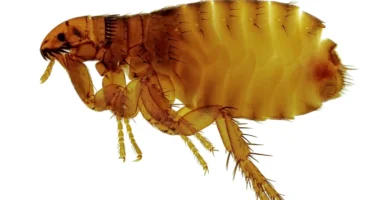
Spiders are a common sight in many homes across the United States. While most spiders are harmless and even beneficial by keeping other insect populations in check, certain species can become problematic. These spiders can cause distress, especially when their numbers increase or when they are venomous. Understanding how to identify, manage, and prevent spider infestations is crucial for maintaining a safe and comfortable living environment.
Table of Contents
Why Spiders Become Pests in Homes
Spiders typically enter homes for three main reasons: food, shelter, and reproduction. They are attracted to areas with abundant insect prey and suitable hiding spots. Common entry points include cracks in walls, gaps around windows and doors, and openings around utility lines. Once inside, spiders can establish themselves in basements, attics, closets, and other undisturbed areas.
Spiders thrive in environments where they can find food and remain undisturbed. Therefore, homes with lots of clutter, dark corners, and high insect activity are more likely to attract spiders. Additionally, seasonal changes can drive spiders indoors seeking warmth during colder months.
Common Signs of Spider Infestations
Recognizing the signs of a spider infestation is the first step in effective pest control. Common indicators include:
- Presence of spider webs: Spiders weave webs to catch their prey. Finding webs in corners, ceilings, and hidden spaces is a clear sign of their presence.
- Sightings of spiders: Regular sightings of spiders, especially in large numbers, indicate an infestation.
- Egg sacs: Spiders lay egg sacs attached to walls, furniture, or other surfaces. These sacs contain multiple eggs and can lead to a sudden increase in the spider population.
- Increased insect activity: An increase in other insects can attract spiders since they are a primary food source for many spider species.
Types of Spiders that Cause Problems in US Homes
Several species of spiders are known to cause problems in homes across the United States. Understanding their characteristics and behavior can help in identifying and managing these pests.

Black Widow Spiders
Identifying Black Widow Spiders
Black widow spiders are easily recognizable by their shiny black bodies and distinctive red hourglass marking on the underside of their abdomen. Females are larger and more venomous than males, measuring about 1.5 inches including the leg span. These spiders prefer dark, undisturbed areas such as garages, basements, and sheds.
Risks and Dangers of Black Widow Spiders
The venom of a black widow spider is neurotoxic and can cause severe pain, muscle cramps, and other systemic symptoms. Bites are rarely fatal but require immediate medical attention, especially for children and the elderly. Symptoms can include abdominal pain, sweating, and elevated blood pressure.

Brown Recluse Spiders
Identifying Brown Recluse Spiders
Brown recluse spiders are tan to dark brown with a characteristic violin-shaped marking on their back. They have six eyes arranged in pairs, unlike most spiders that have eight eyes. Brown recluse spiders are typically found in dark, undisturbed areas such as attics, closets, and storage boxes.
Risks and Dangers of Brown Recluse Spiders
Brown recluse bites can cause necrotic lesions, leading to significant tissue damage and secondary infections. Immediate medical intervention is necessary to manage symptoms and prevent complications. Symptoms of a bite can include severe pain, itching, and an ulcer that forms at the bite site.

Wolf Spiders
Identifying Wolf Spiders
Wolf spiders are large, robust spiders with a hairy appearance. They range in color from brown to gray and have distinctive eye arrangements, with two large central eyes. Unlike many spiders that build webs to catch prey, wolf spiders are active hunters and can be seen roaming on the ground, especially at night.
Risks and Dangers of Wolf Spiders
While wolf spider bites are not venomous to humans, their large size and aggressive appearance can be intimidating. Their bites may cause mild pain and swelling. Wolf spiders are more of a nuisance than a threat, as they can startle people by their sudden movements.
Effective Pest Control Methods for Spiders
Managing spider infestations requires a combination of professional pest control services and DIY solutions. Implementing preventative measures can also help in keeping spiders away.
Professional Pest Control Services
What to Expect from a Professional Spider Treatment
Professional pest control services offer comprehensive solutions for spider infestations. Treatments may include:
- Inspection: A thorough inspection to identify the extent of the infestation and locate entry points.
- Residual insecticides: Application of residual insecticides in areas where spiders are commonly found. These chemicals remain effective for extended periods, killing spiders that come into contact with them.
- Specialized equipment: Use of specialized equipment to reach and treat hidden spaces such as cracks, crevices, and attics.
- Follow-up visits: Follow-up visits to ensure the infestation is under control and to apply additional treatments if necessary.
Cost of Pest Control for Spiders
The cost of professional pest control for spiders varies based on factors such as the size of the property, the severity of the infestation, and the frequency of treatments. On average, homeowners can expect to pay between $150 and $300 for a single treatment, with additional costs for follow-up visits. Regular maintenance plans can help keep spider populations under control and prevent future infestations.
DIY Pest Control Solutions
Natural Pest Control for Spiders
For those seeking natural alternatives to chemical treatments, several options are available:
- Essential oils: Peppermint, lavender, and tea tree oils are known to repel spiders. Mix a few drops with water and spray in areas where spiders are present. The strong scent of these oils is unpleasant to spiders.
- Vinegar: A solution of vinegar and water can be sprayed around entry points and spider-prone areas. The acidic nature of vinegar can help deter spiders.
- Chestnuts: Placing chestnuts around the home is believed to deter spiders. While not scientifically proven, some people find this method effective.
Pest Control Sprays for Spiders
Commercial pest control sprays specifically formulated for spiders can be effective in eliminating and preventing infestations. These sprays often contain pyrethroids, which are toxic to spiders but safe for indoor use when applied correctly. It’s important to follow the manufacturer’s instructions to ensure safe and effective use.
Preventative Measures to Keep Spiders Away
Regular Cleaning and Maintenance
Maintaining a clean and clutter-free home can significantly reduce the likelihood of spider infestations. Regularly vacuuming, dusting, and decluttering can eliminate hiding spots and remove spider webs and egg sacs. Pay special attention to corners, closets, basements, and other undisturbed areas.
Using Pest Control Bombs for Spiders
Pest control bombs, or foggers, release insecticidal aerosols that can penetrate cracks and crevices. These are useful for severe infestations but should be used with caution and according to the manufacturer’s instructions. It’s important to vacate the premises during treatment and follow all safety guidelines to prevent exposure to harmful chemicals.
Spider infestations can be a significant nuisance and, in some cases, pose health risks due to venomous bites. By understanding the types of spiders that cause problems in US homes and implementing effective pest control methods, homeowners can manage and prevent infestations. Whether through professional pest control services or DIY solutions, taking proactive steps can ensure a safe and spider-free living environment.
Maintaining a clean and well-maintained home is key to preventing spider infestations. Regular inspections and prompt action at the first sign of an infestation can help keep your home free of these unwanted pests. Remember, while most spiders are harmless, it’s always best to err on the side of caution and seek professional help when needed.
Other common pests in the United States
14 July, 2024

Pest Control for Ants
14 July, 2024

Pest Control for Bed Bugs
16 July, 2024

Pest control for fleas
16 July, 2024

Pest Control for Mice
16 July, 2024

Pest Control for Roaches
16 July, 2024

Pest Control for Termites
17 July, 2024

Pest Control for Rats
FAQs About Pest Control for Spiders
What pest control methods are most effective against spiders?
managing spider populations. These insecticides target the spider’s nervous system, leading to their elimination. An Integrated Pest Management (IPM) approach is recommended, which includes:
Thorough Inspection and Monitoring: Regularly inspect areas where spiders are commonly found, such as corners of windows, closets, and basements, to identify spider activity.
Species Identification: Understanding the specific species of spider can help tailor the control strategy to be more effective.
Non-Chemical Methods: Use sticky traps for monitoring and reducing spider populations, and maintain a clean environment to eliminate hiding spots.
Selective Use of Insecticides: Apply microencapsulated pyrethroid insecticides as spot sprays or crack and crevice applications, focusing on areas where spiders live or rest.
This multi-faceted strategy ensures a more effective and long-lasting solution to spider infestations.
When is the right time to call in pest control for spiders?
It’s best to seek pest control services at the first sign of an infestation. Early indicators include frequent sightings of spiders, the presence of webs, especially in living areas, and finding egg sacs in dark, undisturbed spaces. Addressing the issue promptly can prevent it from escalating and reduce the risk of venomous spider bites. Regular inspections, particularly during peak spider activity seasons in spring and fall, can help catch problems early.
3. How much should I expect to pay for professional spider treatment?
The cost of spider treatment varies based on several factors, including the size of your home, the severity of the infestation, your geographic location, and the specific treatment methods used. On average, homeowners can expect to pay between $150 and $300 for a single treatment. Additional charges may apply for follow-up visits or if the infestation is severe. It’s advisable to contact multiple pest control companies to compare quotes and find the best deal.
What are some effective DIY pest control methods for spiders?
For those preferring a DIY approach, several effective methods include:
Essential Oil Sprays: Mix a few drops of peppermint, tea tree, or lavender oil with water in a spray bottle and apply in areas where spiders are commonly seen.
Vinegar Solution: A mixture of equal parts white vinegar and water can deter spiders when sprayed around entry points and spider-prone areas.
Diatomaceous Earth: Sprinkle this natural powder in areas where spiders travel; it works by dehydrating them.
Regular Cleaning: Vacuum regularly to remove webs and egg sacs, and keep storage areas organized to eliminate hiding spots.
Seal Entry Points: Use caulk to seal cracks and gaps around windows, doors, and pipes to prevent spiders from entering your home.
How can I prevent spiders from entering my home?
Preventing spiders from entering your home involves a combination of strategies:
Seal Cracks and Gaps: Inspect your home for any openings and seal them with caulk or weather stripping.
Reduce Outdoor Lighting: Bright lights attract insects, which in turn attract spiders. Use yellow or sodium vapor lights outdoors to minimize this.
Maintain Your Yard: Keep bushes and trees trimmed back from your home and remove piles of wood or debris where spiders can hide.
Use Natural Repellents: Planting mint or lavender around your home can help deter spiders.
Declutter Regularly: Keeping your home tidy and organized reduces potential hiding spots for spiders.
By combining these preventive measures, you can significantly reduce the likelihood of spider infestations in your home.
Does spraying vinegar keep spiders away?
Yes, spraying a solution of vinegar and water around entry points and areas where spiders are commonly found can help repel them. The strong odor and acidic nature of vinegar are unpleasant to spiders, making it an effective natural repellent. Regular reapplication is necessary for the best results.
What is a natural repellent for spiders?
Natural repellents for spiders include essential oils such as peppermint, lavender, and tea tree oil. Vinegar solutions and chestnuts are also believed to deter spiders. These natural alternatives provide a safer option compared to chemical sprays and can be easily incorporated into your pest control routine.
How do you make pest control spray at home?
Creating a homemade spider repellent spray is simple and effective. Here’s a quick recipe:
Ingredients:
1 cup of water
10-15 drops of essential oil (peppermint, lavender, or tea tree)
Instructions:
Combine the water and essential oil in a spray bottle.
Shake well before each use.
Spray the solution in areas where spiders are present or where you want to prevent them from entering.
This DIY solution is not only easy to make but also a pleasant-smelling way to deter spiders.
Can pest control get rid of spiders?
Absolutely! Professional pest control services can effectively eliminate spider infestations using specialized treatments and equipment. They can assess the situation and provide targeted solutions. For minor infestations, DIY methods can also be effective. A combination of professional services and regular maintenance is the best way to ensure long-term control.
What is the best pest control for spiders?
The best pest control for spiders involves a combination of professional treatments, preventative measures, and natural repellents. Regular cleaning and maintenance are crucial in keeping spiders at bay. By utilizing a multi-faceted approach that includes sealing entry points, using natural repellents, and scheduling professional treatments as needed, you can effectively manage and prevent spider infestations in your home.
